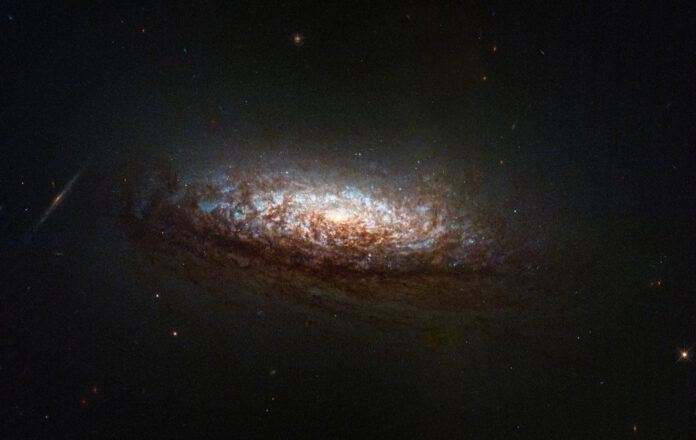
The recent events demonstrate that the Hubble Space Telescope is far from becoming obsolete.
A Technical Glitch
A few weeks ago, the aging space telescope faced some technical issues. One of Hubble’s gyroscopes, essential for its precise targeting system, suddenly stopped working. The Hubble team has worked tirelessly to bring the telescope back online. Their efforts have paid off, as evidenced by a new, spectacular photograph of a nearby galaxy.
An Ongoing Challenge
For over thirty years, the Hubble Space Telescope has delivered stunning images of planets and stars. However, its age is starting to show, causing it to encounter occasional technical problems. Recently, one of its gyroscopes failed once again, prompting Hubble to switch to ‘safe mode.’ In this mode, scientific observations are temporarily halted until new instructions are received from ground control.
The Role of Gyroscopes
Hubble is equipped with six gyroscopes, which allow the telescope to focus on objects for study. Over time, these gyroscopes have begun failing one by one. Fortunately, Hubble doesn’t require all six to function; it can operate with just three. However, with the third gyroscope now malfunctioning, things have become more precarious. This particular gyroscope kept indicating maximum rotation speed, regardless of Hubble’s actual movement. Multiple attempts to reset its electronics only provided temporary fixes.
Operating with a Single Gyroscope
Thankfully, there is a backup plan. Hubble can switch to a mode utilizing just one active gyroscope while keeping a second as a reserve. This strategy has been considered for years. NASA initially proposed this mode two decades ago to extend Hubble’s operational life and ensure the continuity of its scientific discoveries, even with fewer functioning gyroscopes. The idea has been tested before: Hubble operated with two gyroscopes from 2005 to 2009 and demonstrated it could work with just one gyroscope in 2008 without compromising the quality of its observations.
A New Operating Mode
In recent weeks, the Hubble team has worked diligently to reset the telescope. On June 14, the space telescope resumed its scientific operations. Is it still functioning correctly? Judge for yourself!
Above is the newly-released image of NGC 1546, a neighboring galaxy in the constellation Dorado. This photo showcases the dust lanes illuminated by the galaxy’s core. The dust absorbs light from the core, giving it a reddish hue and a rusty appearance. The core shines brightly with a yellowish light, indicating an older star population. Blue regions of active star formation shimmer through the dust. Various background galaxies are also visible, including a sideways spira galaxy just left of NGC 1546.
Remaining Limitations
The impressive photo proves that Hubble is far from being outdated. Even operating with a single gyroscope, its image quality remains remarkably high. However, there are some limitations. The observatory will require more time to focus on scientific targets and cannot track moving objects closer than Mars, although such targets are rare for Hubble.
Continuing the Mission
These are minor setbacks. The NASA team expects Hubble to continue performing most of its scientific observations in the new mode. This means the telescope can carry on with its groundbreaking exploration of the universe. “Hubble’s new image of a breathtaking galaxy shows that our new, more stable targeting mode is fully successful,” emphasizes team member Jennifer Wiseman. “Hubble is a critical tool in NASA’s astronomical toolkit, and we’re ready for many more years of discoveries, from our solar system to exoplanets and distant galaxies.”
The team has once again succeeded in reviving Hubble, so we can look forward to many more stunning photos and discoveries. This is quite remarkable, considering the telescope, launched in 1990, was designed to last about 10-15 years. Hubble has been active for over three decades and recently celebrated its 34th anniversary. This not only shows that Hubble explores the boundaries of the universe but also its own design constraints. Hopefully, the telescope will continue to operate for many more years, surprising us with beautiful images of the cosmos.











